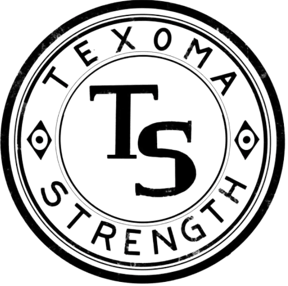How To Lose Fat
The right training program for you will depend on your goals (we’ll go into how to set goals in a later post): fat loss, muscle growth, strength, endurance, or general health and fitness. It also depends on your personality type (easily bored vs. structure and routine), life constraints such as time and money, and your fitness experience level. While you can achieve some of the previous mentioned goal results simultaneously, it is imperative that you pick what is most important to you and choose your workout program accordingly. If you chase two rabbits, you will catch neither. Since most people's main goal is fat loss, this will be the topic of discussion.
“Fat loss” is not meant to be confused with “weight loss.” Most people say they want to lose weight when, in fact, they want to lose fat while maintaining lean muscle mass. 71.6% of American adults aged 20 and over are overweight. The CDC estimates that 40% of American adults are obese. 55% of Americans don’t believe that diets are effective for weight loss. While diet alone can lead to fat loss, a combination of proper diet and an effective exercise program will maximize results. There are many types of exercise routines that are conducive to fat loss with some being more effective than others. Common routines include weight training, HIIT (high intensity interval training), LISS (low intensity steady state), swimming, spinning, kickboxing, Pilates and yoga.
Weight Training
As long as you’re following a progressive overload plan (see The Secret To Gains posted previously) you will increase muscle mass which will increase your metabolism, meaning, you’ll become more efficient at fat and calorie burning both during and after training. Beginners should try shooting for two to four sessions per week, alternating upper and lower body, aiming for one to three sets of eight to ten reps on each muscle group.
HIIT
This type of training involves repeated bouts of high intensity effort followed by varied recovery times. While the workout itself will not burn many fat calories, it will raise EPOC (excess post-exercise oxygen consumption) that will allow you to burn fat up to 24 hours afterwards, and sometimes even longer. The tabata protocol is a common and quick form of HIIT. To try it, do eight 20-second rounds of all-out intensity exercise that will quickly raise heart rate (sprinting, kettlebell swings, burpees, etc.) and take just 10 seconds between rounds.
LISS
This is also known as zone 2 cardio. The theory is that your body stops using glycogen for energy and switches to stored energy (fat). It can be achieved by brisk walking, jogging, swimming, cycling, rowing, etc. and should be done for a minimum of 30 minutes. The downsides to this is that the lower intensity, the absolute energy expenditure (calories being burned) is less (if duration is matched). Essentially, a short intense HIIT workout will be more effective than a longer LISS one. Some studies show that during fasted cardio, the amount of calories being burned are composed of 20% more fat calories than doing the same cardio after eating.
Swimming
Swimming is a great low-impact (easy on joints) full body exercise that is great for fat loss and toning. Beginners can shoot for 15-20 minute swims every other day (four to five days per week) and progressively working up to 30 minutes. You may enjoy water aerobics if there is a local class available.
Spinning
Spin class can be a fun, high-energy and motivating way to burn calories quickly. You can burn up to 500 calories in a 60-minute class (and look good in your spandex while doing it) and can increase EPOC post workout.
Kickboxing
This is a fun way to get a full body workout and burn some calories while getting your frustrations out. There are many YouTube videos available to follow along with if there aren’t any kickboxing classes near you. You can start with three days a week and progressively increase either duration or amount of sessions.
Lean mass (muscle) burns calories. More lean mass = more calories being burned. For this reason (and also my bias as a strength sport enthusiast) I suggest a combination of HIIT, LISS, and weight training with the latter being the foundation of the routine. These can be done at home or in any gym and don’t require special equipment such as a Pilates reformer or swimming pool. An example week would look like this:
Monday: HIIT
Tuesday: weight training
Wednesday: rest
Thursday: HIIT
Friday: weight training
Saturday: rest
Sunday: LISS
If you would like a custom program, fill out the form below!
References
(n.d.). Overweight and obesity statistics 2022. The Checkup by SingleCare. https://www.singlecare.com/blog/news/obesity-statistics/#:~:text=Nearly%2040%25%20of%20American%20adults,over%20are%20overweight%2C%20including%20obesity.
(n.d.). Confidence in the effectiveness of diet programs in the United States as of March 2017. Statista. https://www.statista.com/statistics/716083/confidence-diet-programs/#statisticContainer
(n.d.). These Are the 10 Best Workouts for Effectively Burning Fat. Byrdie. https://www.byrdie.com/fat-burning-workouts
